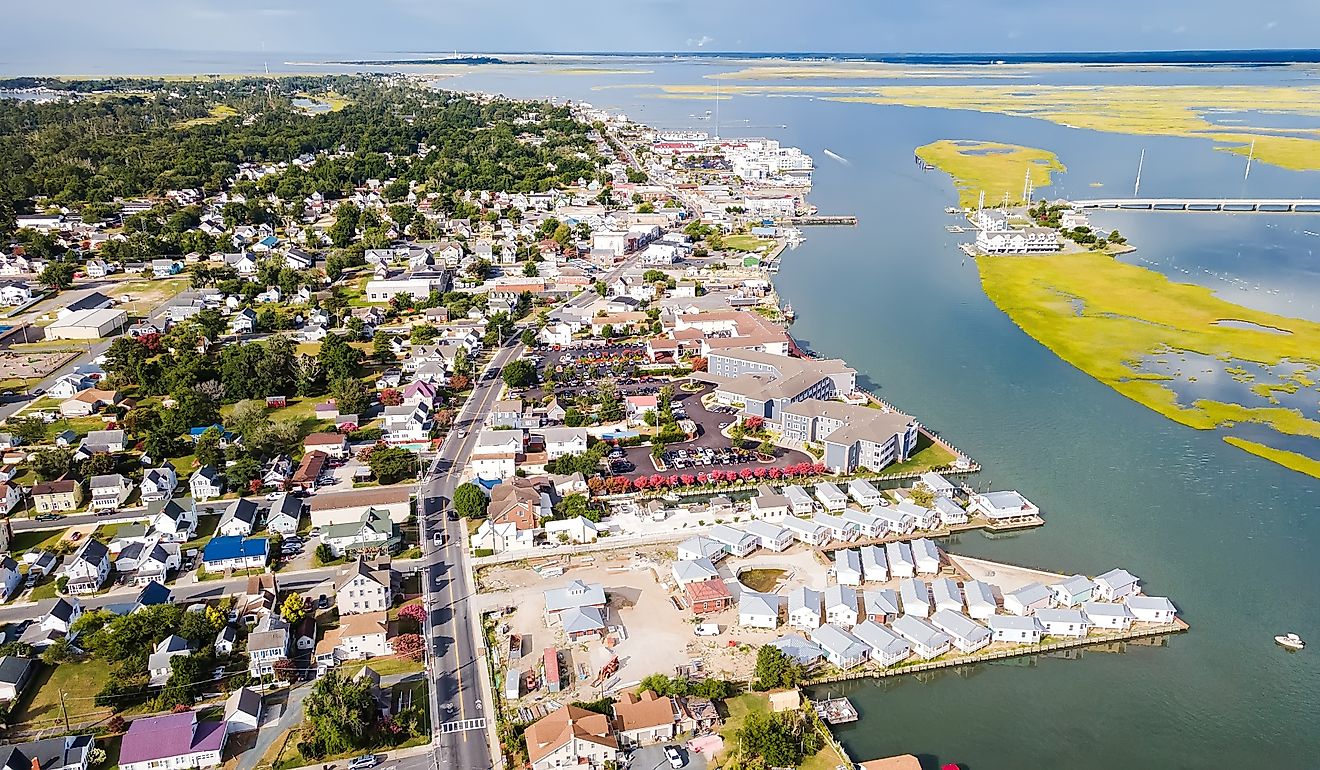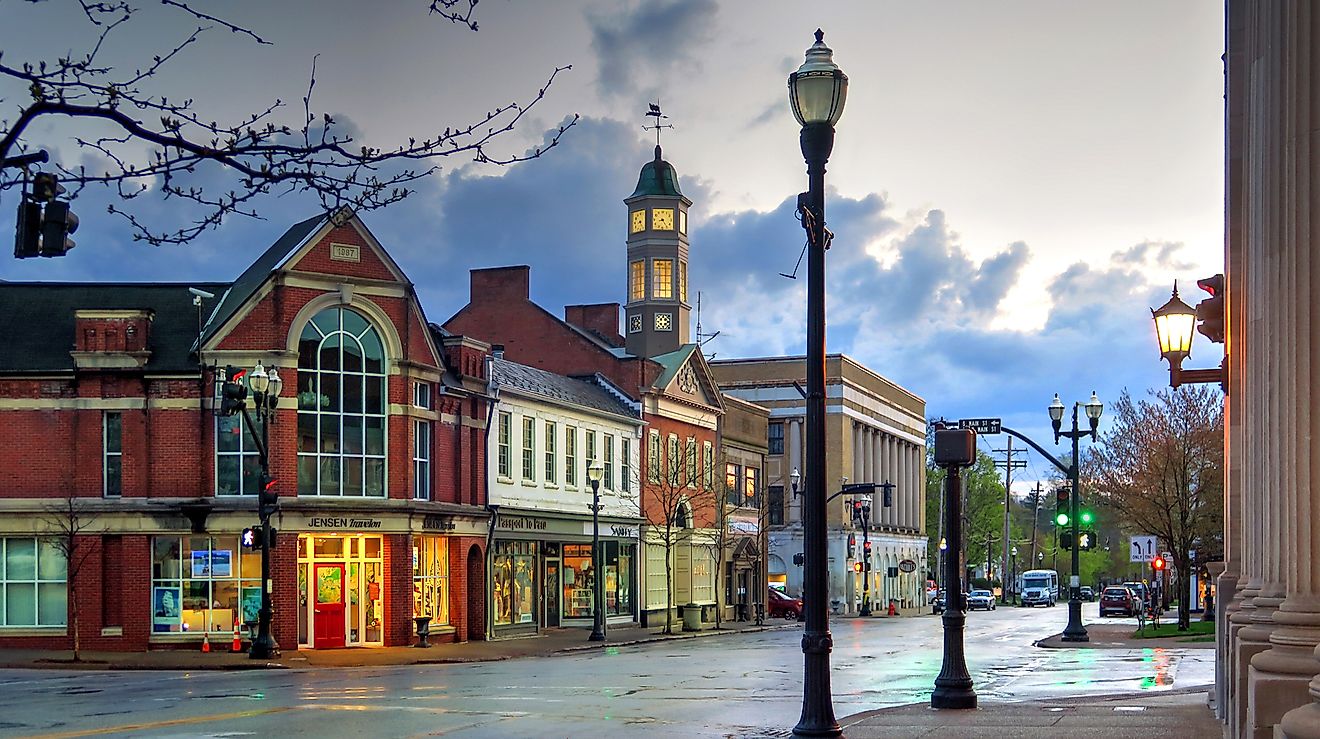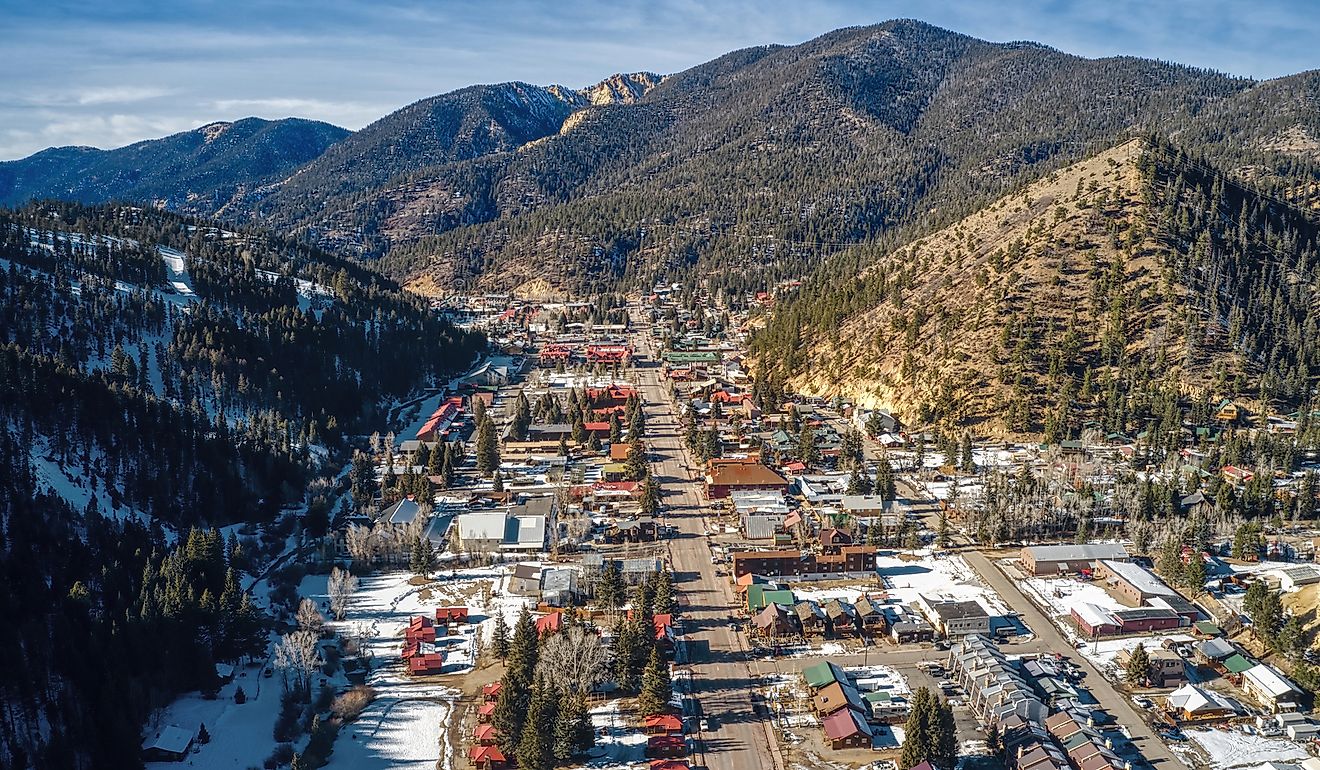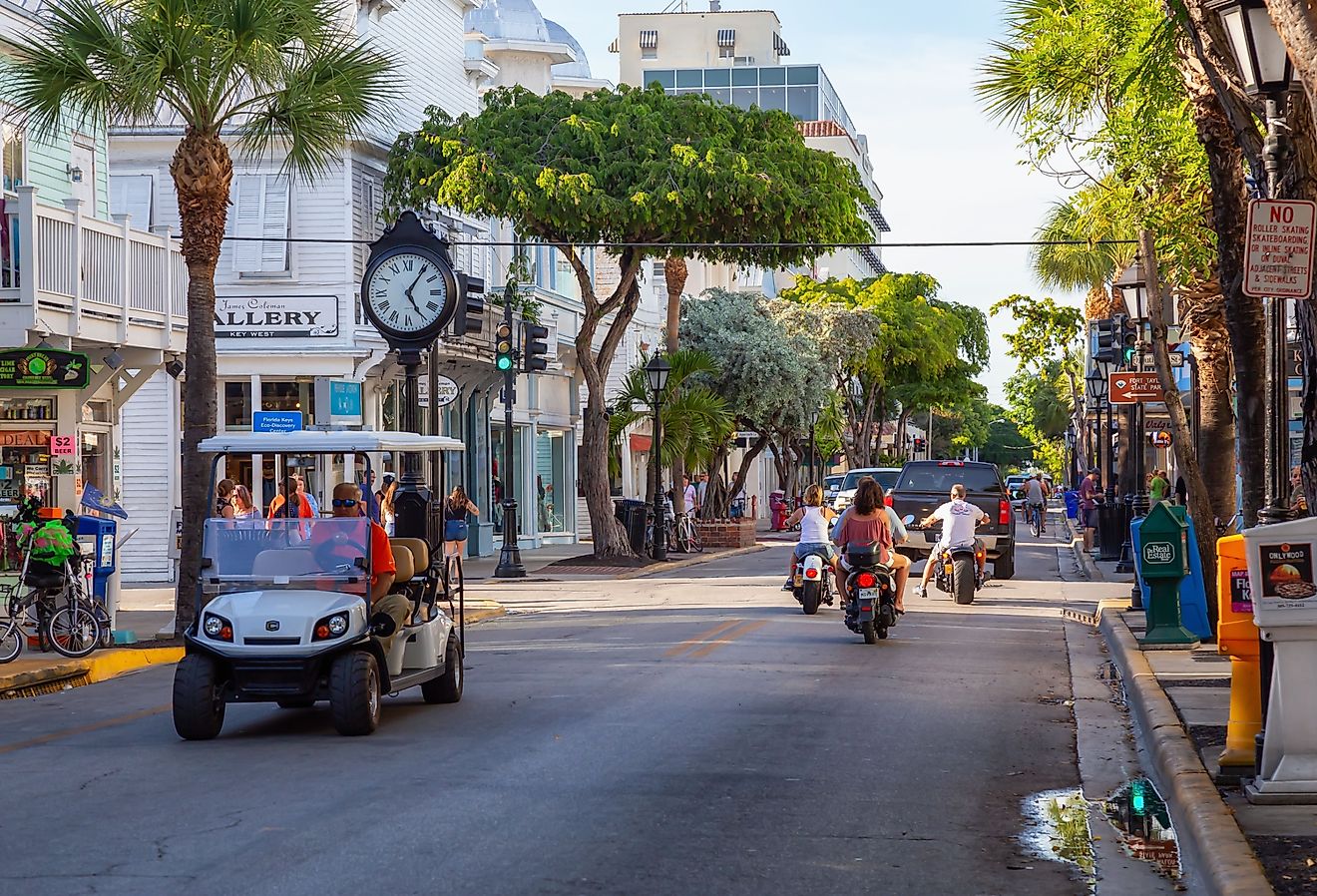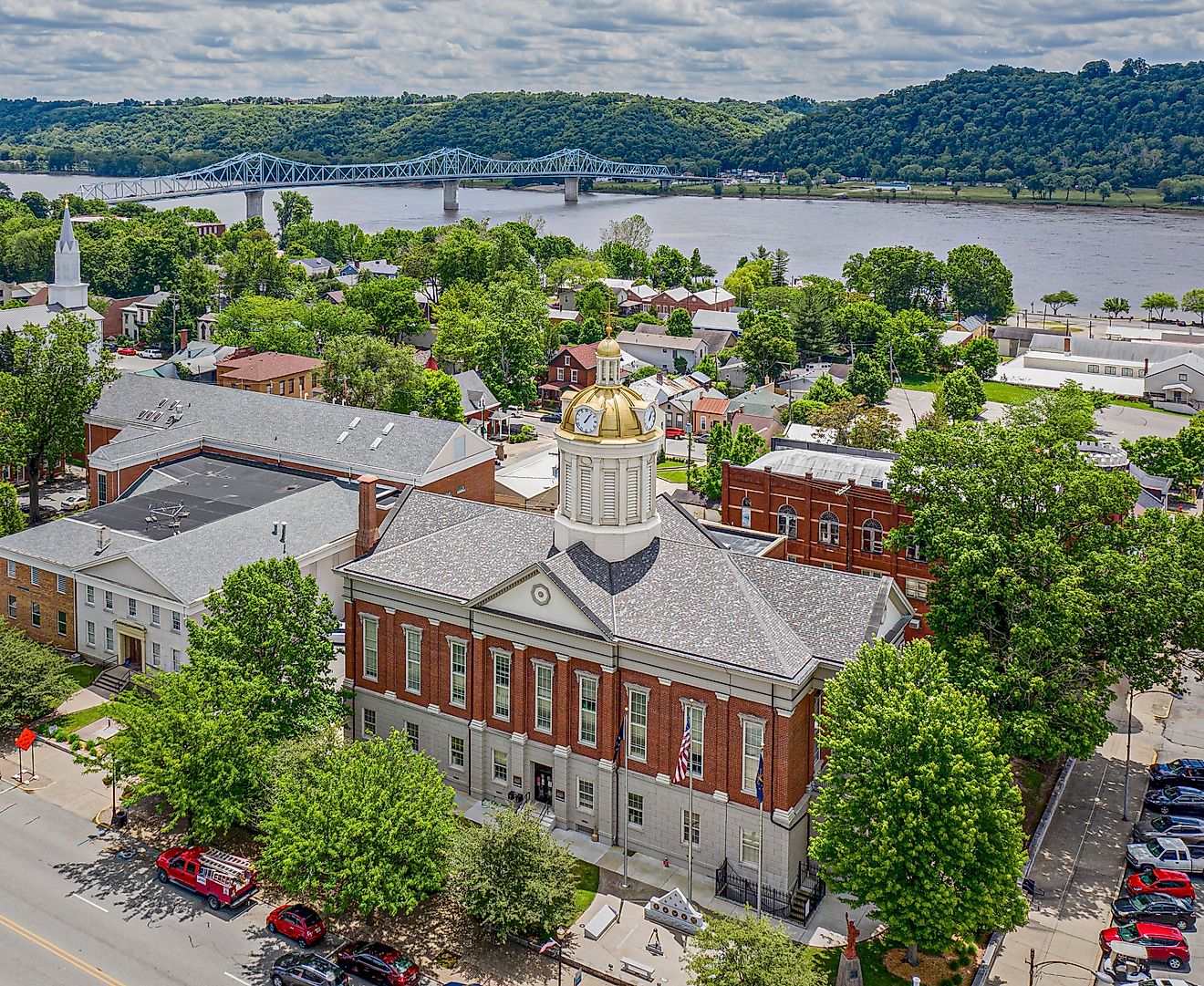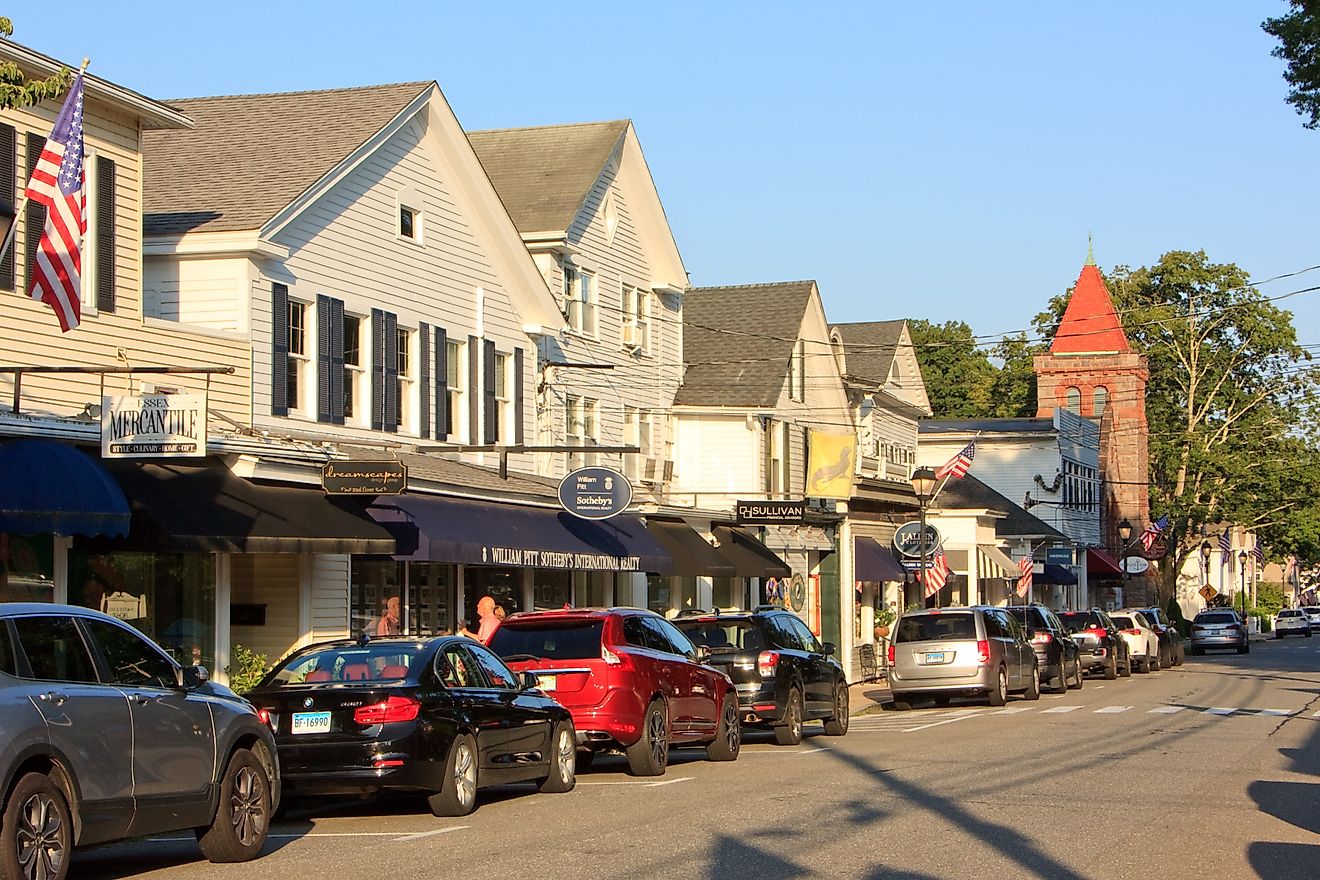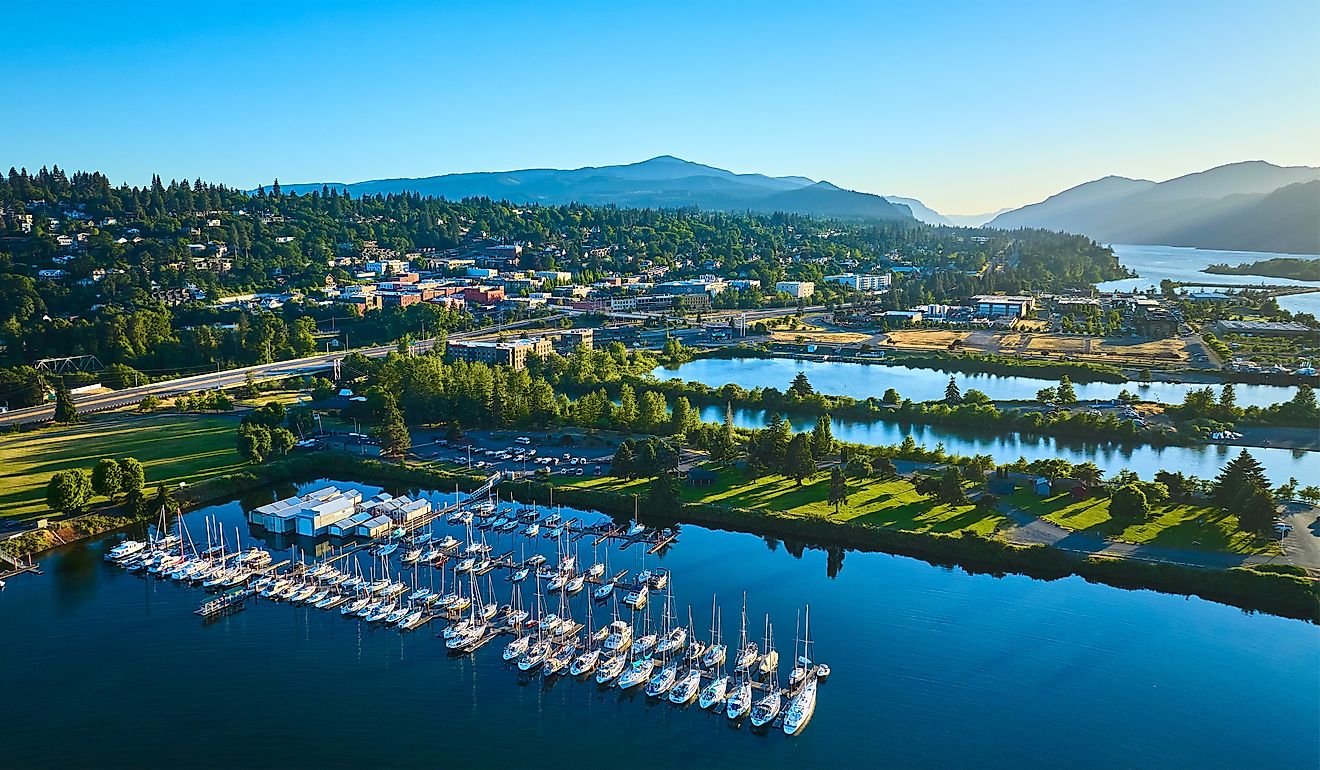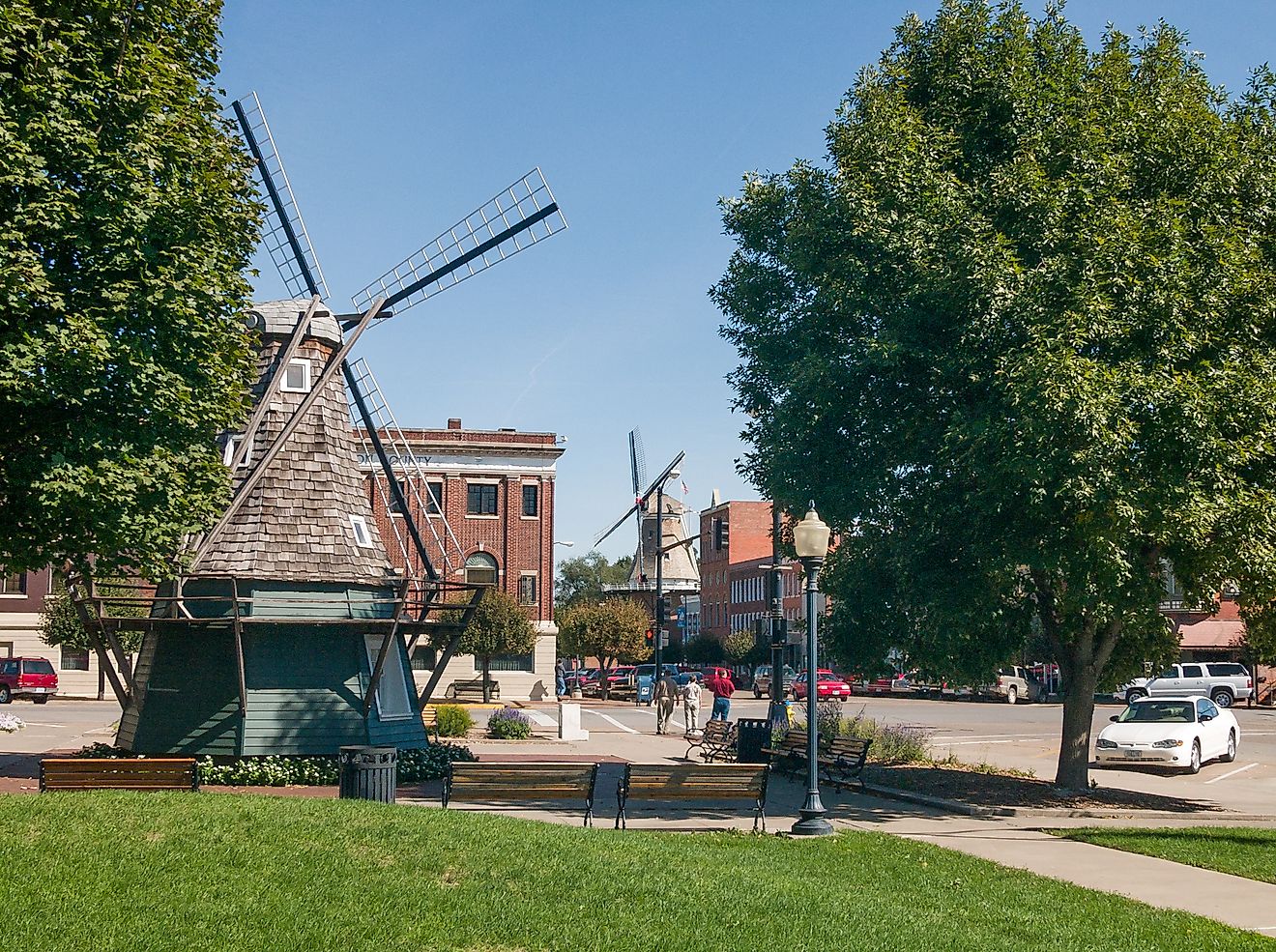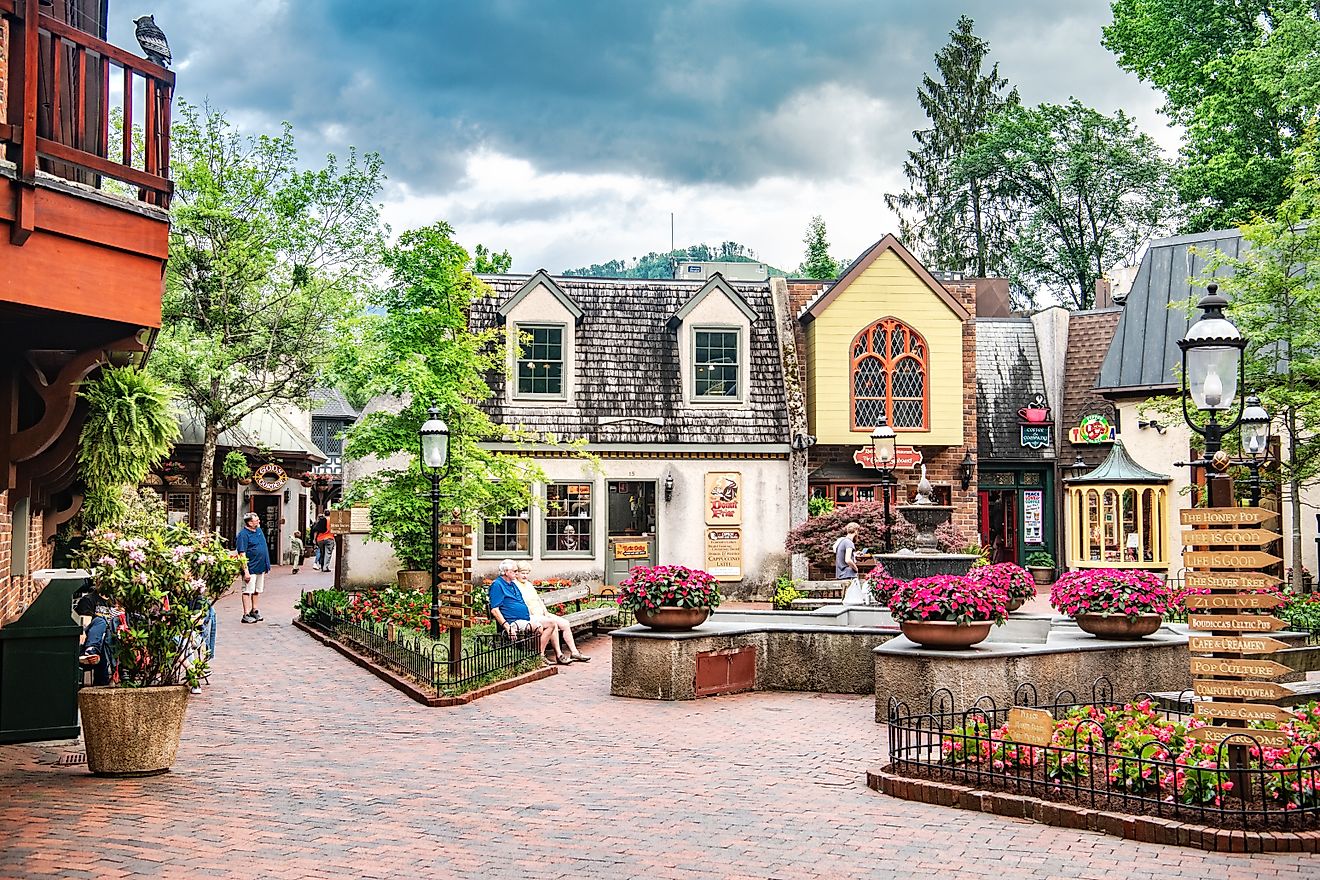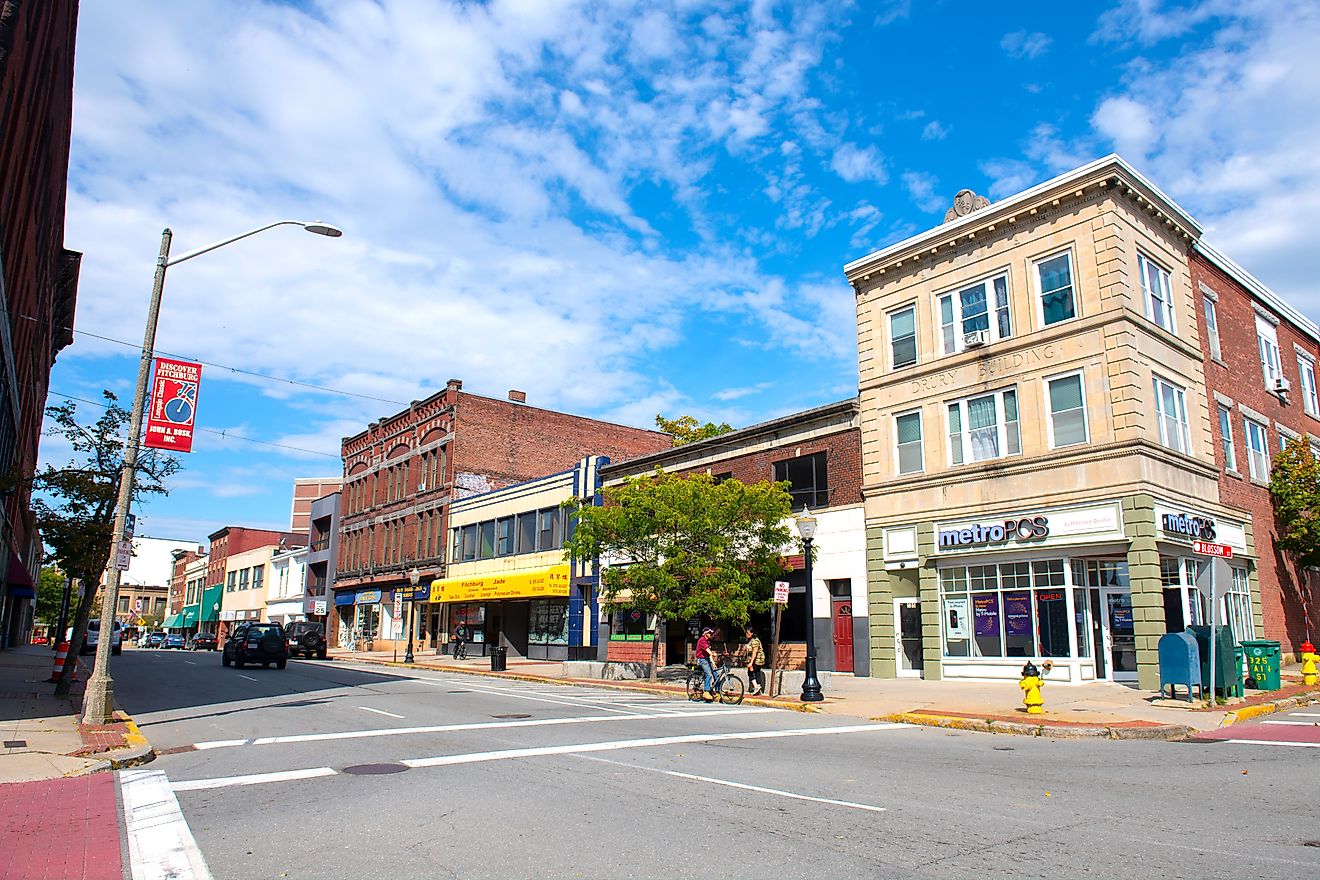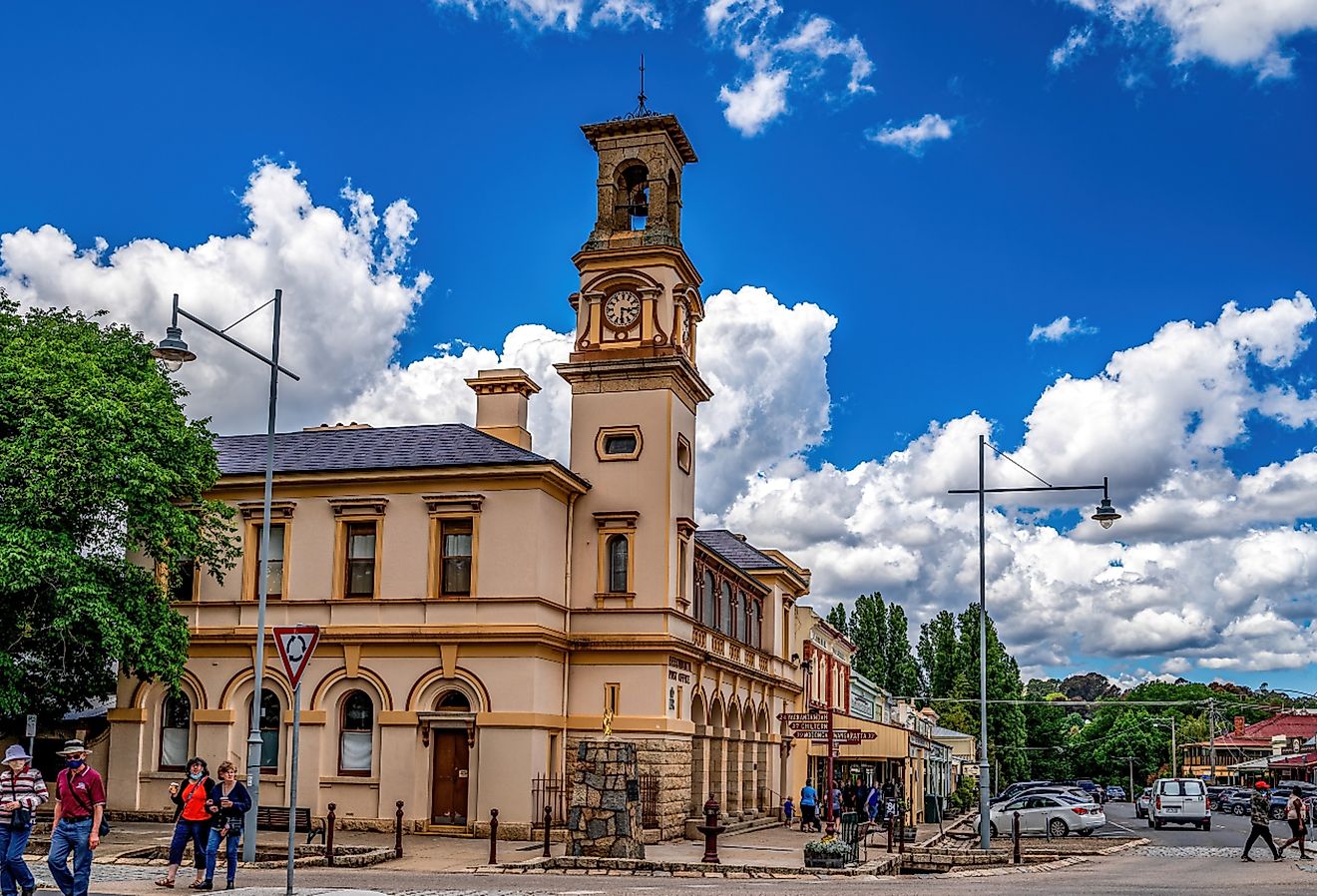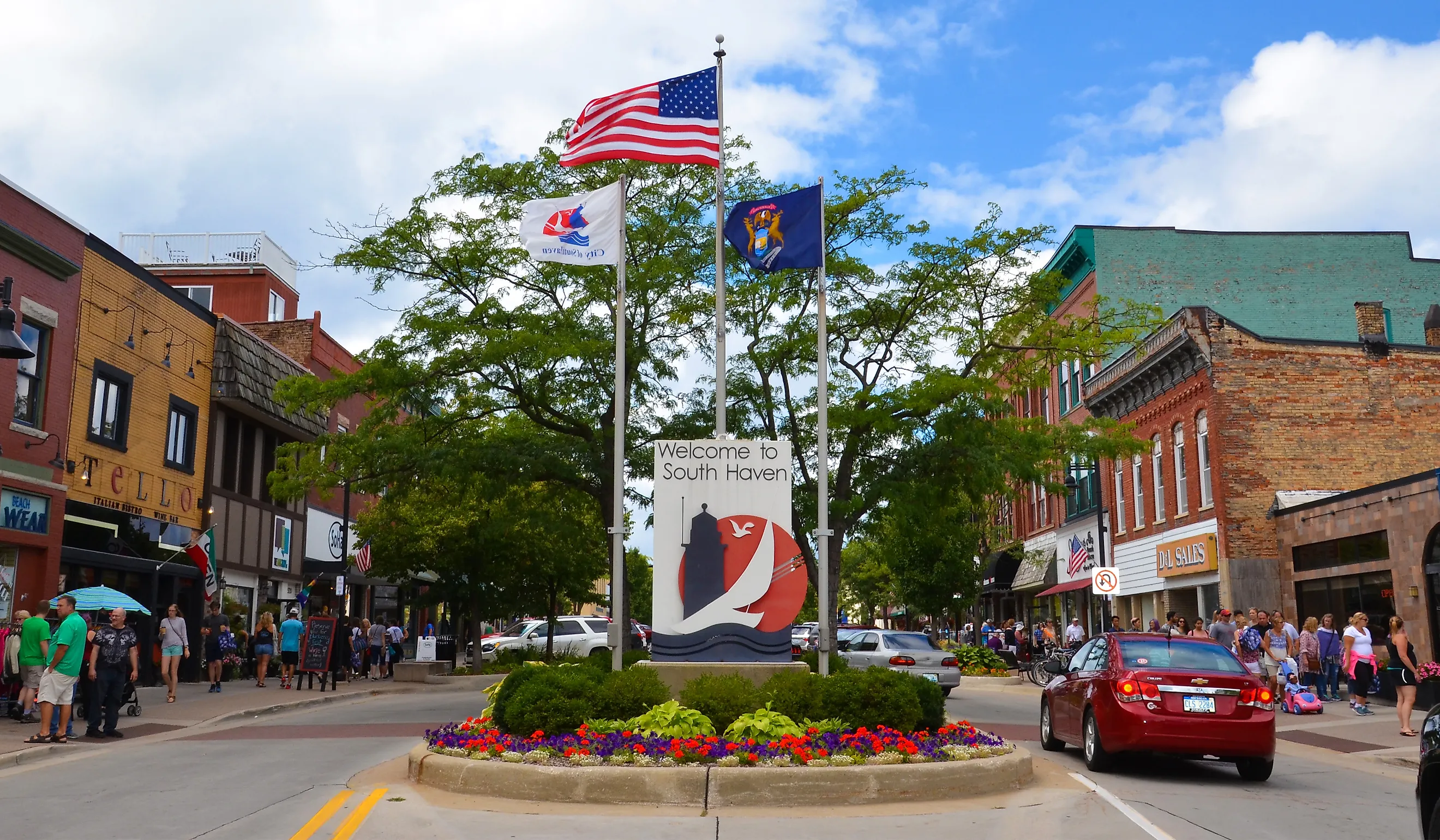
12 Standout Main Streets In Michigan
Michigan's small towns are spread seamlessly across several freshwater shorelines - no wonder this is called The Great Lake State. As such, four-season scenery and maritime charm abound. Adding even more allure to these magnetic communities are main streets that range from modern tourism strips to historical boom-town enclaves to isolated villages that simply go with their flow. There's a lot of ground (and water) to cover, so let's ride this main street train all the way from the southern extent of the Lower Peninsula through to the northernmost reaches of the Upper Peninsula - beginning with the eclectic beach town of South Haven.
South Haven
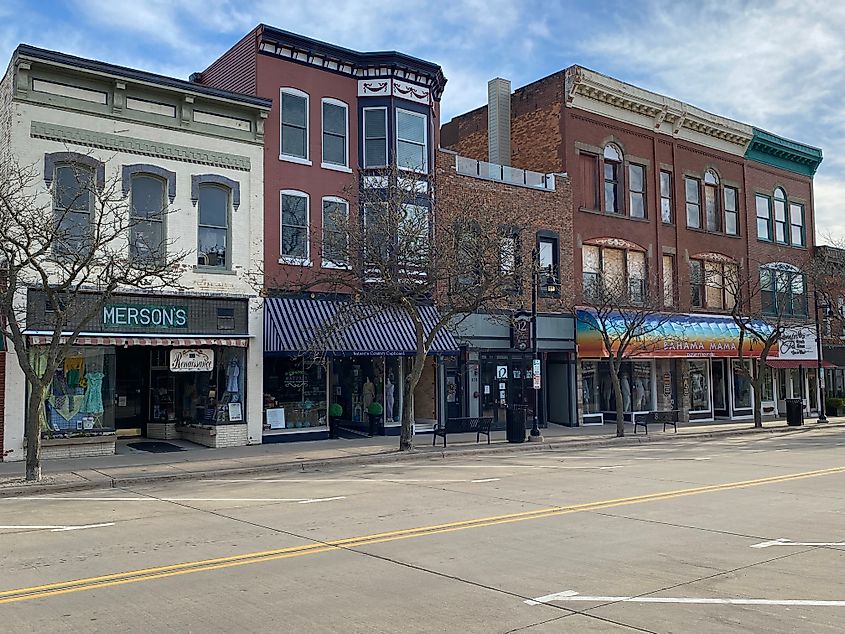
Situated on Lake Michigan's southeastern shoreline, South Haven kicks off a string of picturesque Lower Peninsula beach towns. Like its upcoming cousins, this Van Buren County gem specializes in sandy strips (two of them) punctuated by a red lighthouse, a splash of maritime culture, and plenty of good restaurants, coffee shops, and pubs for the swell of summer tourists to enjoy. One thing that separates South Haven from the herd is its essentially dual main streets. First up is Phoenix Street. Right at the "Welcome to South Haven" split, Phoenix becomes quite pedestrian-friendly, encouraging tourists to switch up their beachcombing with a cup of joe at Water's Edge Coffee or a crisp pint from Harbor Light Brewery, or to peruse the mix of surf, casual clothing, toy, and candy shops. See this stretch through to its terminus, and you'll naturally be funneled toward South Beach and the South Haven Lighthouse.
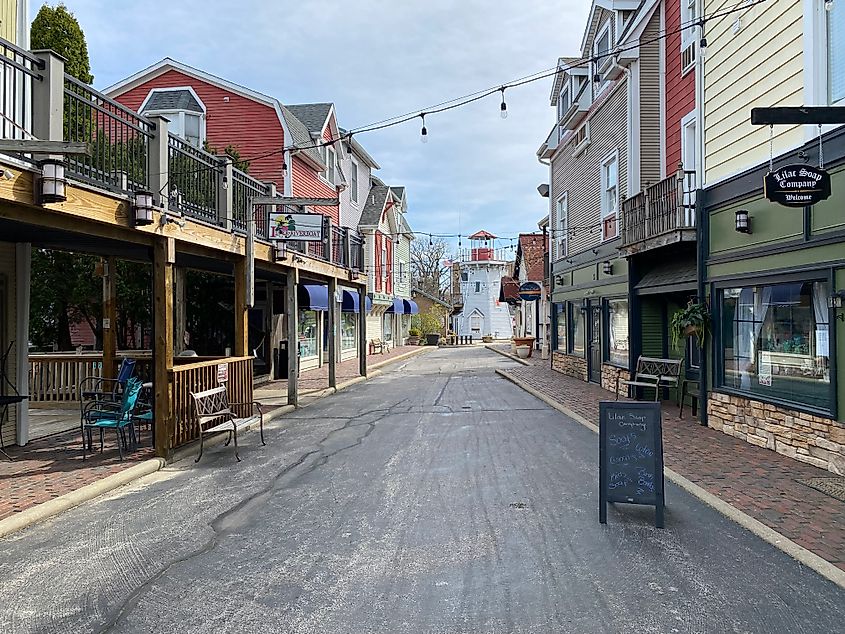
Alternatively, veer north on Center Street and you'll pass New Holland Distilling and the colorful matinee of the Michigan Theatre on your way into the Old Harbor Village. Here, a cobblestone walkway will lead you through an open-air shopping/dining area in the style of an old-fashioned New England community.
Holland
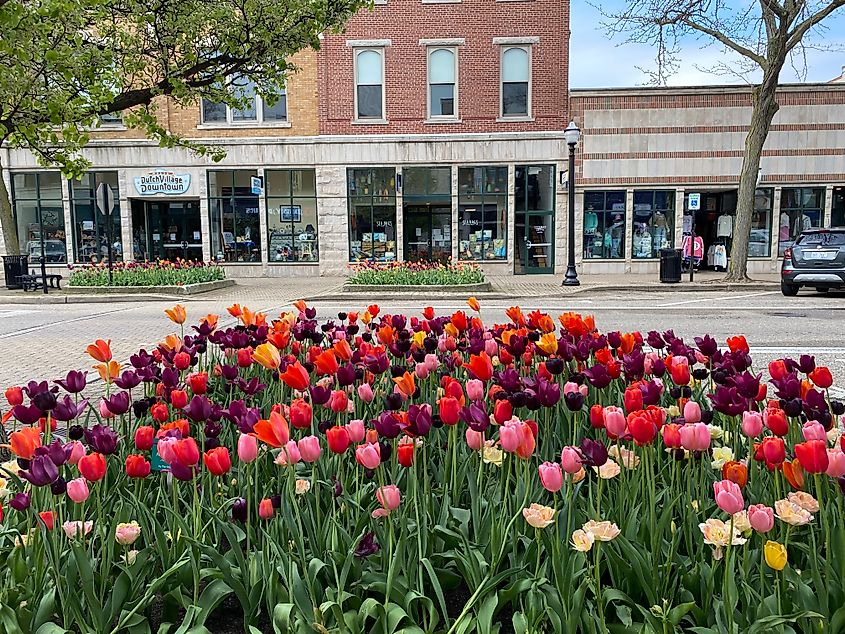
Just 30 miles up the road from South Haven, the Dutch enclave of Holland carries the Michigan beach town torch, while also brandishing a unique color palette. Founded by Dutch Calvinists in 1847, Holland is not only named after their home province, but thanks to the rows of two-story brick buildings, windmills, flower gardens, and heritage shops, it embodies an authentic European spirit. Spring's Tulip Time Festival is the best time to visit, as upwards of five million flowers create a kaleidoscope not only across Windmill Island Gardens, but along 8th Street - Holland's core commercial strip. Lean into the festivities with some traditional sweets from Kilwins, then shop for a pair of Dutch clogs (aka klomps) while indulging in a cheese sampling at Nelis' Dutch Village, and cap it off with a craft pilsner at New Holland Brewing. The Holland Farmers Market also takes over the west end of 8th Street every Wednesday and Saturday morning, so be sure to look for the pop-up tents and wealth of locally-sourced produce and crafts.
Grand Haven
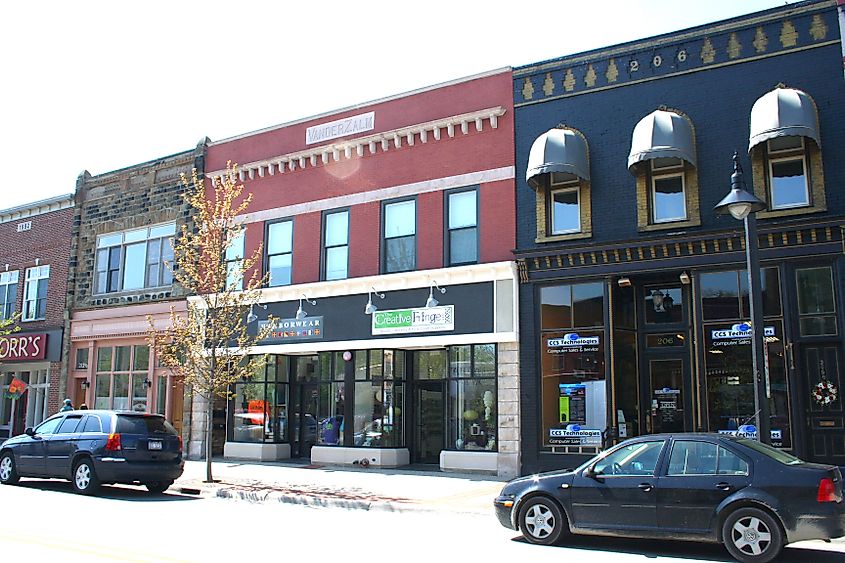
And less than 30 minutes north of Holland, Grand Haven closes out this close-knit trifecta of southern Lake Michigan gems. Generally considered to be the most popular of The Great Lake State's beach towns, Grand Haven is geared toward sun-seeking extroverts. While the spacious sands of Grand Haven State Park and Grand Haven City Beach are the primary draws, a little way up the east bank of the Grand River, Grand Haven's downtown core also knows how to have a good time. The Main Street America-designated Washington Avenue crams dozens of indie shops into a three-block cluster - offering everything from sporty beachwear to upscale attire. If you're nursing a sunburn or are a little burnt out on shopping, you can strike a new chord in the (free) Tri-Cities Historical Museum (with exhibits covering the natural, Indigenous, pioneer, and maritime eras), or grab a seat in front of the Grand Haven Musical Fountain and wait for the evening audio-visual display.
Leland
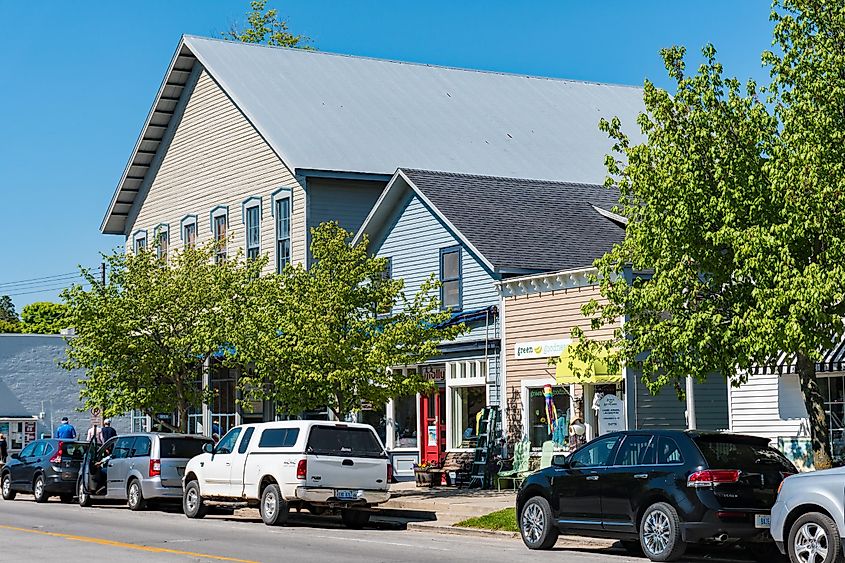
Standing at the transition between Sleeping Bear Dunes National Lakeshore and the natural/viticultural bounties of the Leelanau Peninsula, there are plenty of reasons to swing by little old Leland. But one local charm that is easy to overlook is River Street - the community's multifaceted main street. East River Street, for the most part, is a quaint residential area. But just as it prepares to bisect the Pure Michigan Highway, the first noteworthy tourist attraction emerges: Verterra Winery. The Leelanau Peninsula is one of Michigan's five designated American Viticultural Areas, with Verterra being one of 20 wineries on the celebrated Leelanau Peninsula Wine Trail.
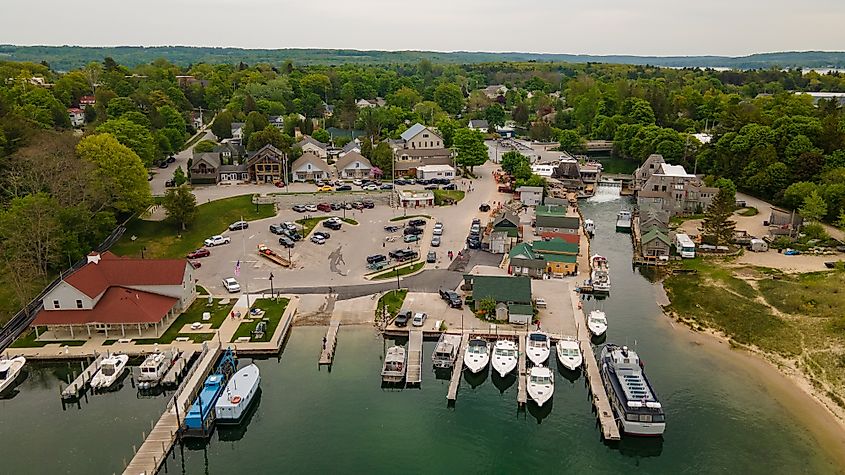
West River Street nestles up close to the Leland River, funneling pedestrians into Historic Fishtown. This row of shanties and vessels is a living testament to Lake Michigan's centuries-old maritime culture and also a niche spot to shop for catches of the day, artisanal cheese, candy, and even boutique clothes. As River Street terminates at the lakeshore, you will then be presented with two tantalizing side-trip options: a ferry to the Manitou Islands or a chartered fishing excursion.
Traverse City
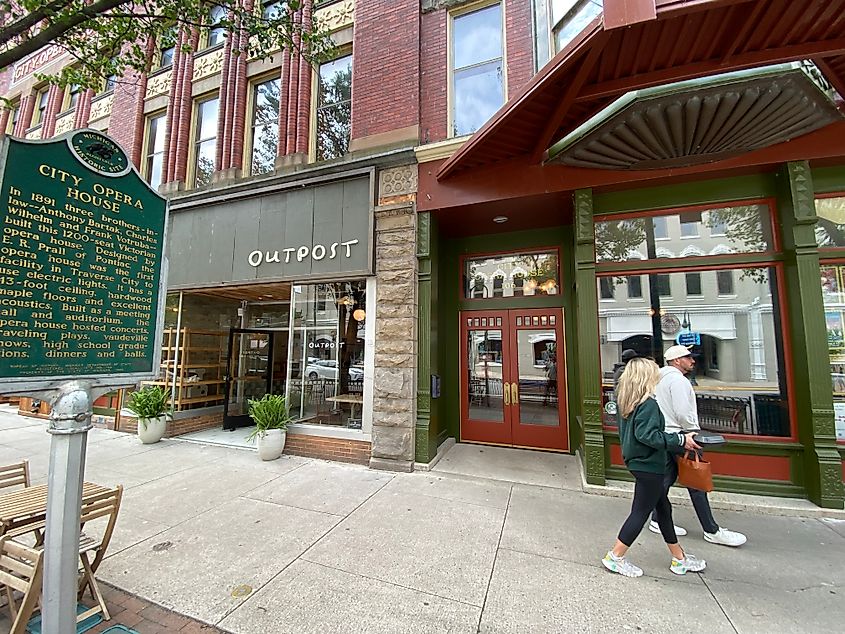
Traversing over to Traverse City, there are four distinct districts to explore: Waterfront, Old Town, Warehouse, and, for today's purposes, Front Street (i.e., main street). This lengthy stretch of immaculate 19th-century facades is full of unique boutiques, cool cafes, breweries, and historical landmarks. Honing in on its central assets, be sure to catch a show at the City Opera House (an operating 700-seat Victorian theatre) and wash it down with a pint next door at Identity Brewing Company, or for a quieter exploration, sift the shelves at Brilliant Books or Horizon Books (both are in high regards) and then sink into your new read over a cuppa at Good Harbor Coffee or Outpost.
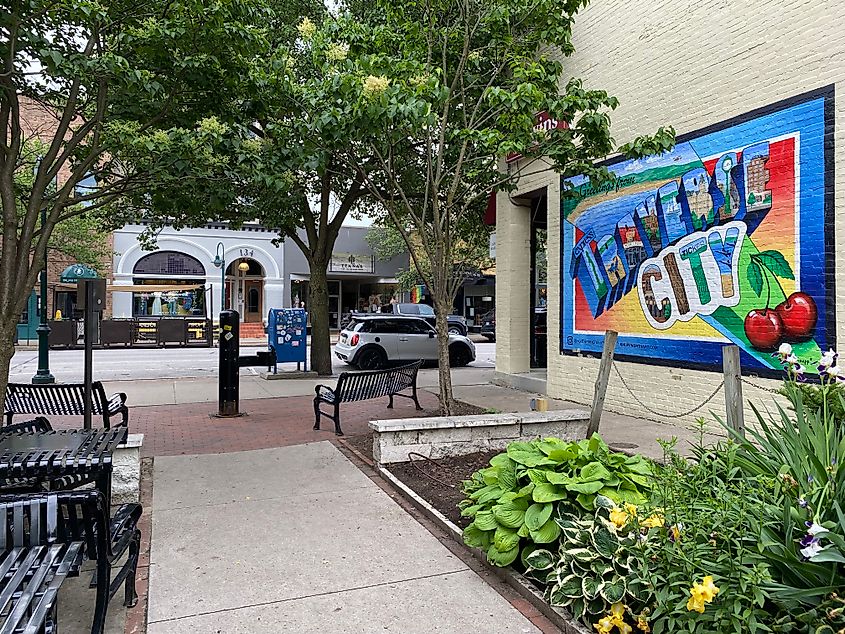
While walking around this pedestrian-friendly stretch, pay attention to the nooks and crannies. For instance, the J. Smith Walkway is a cool place to snap a few pics, or sit down with your pizza or ice cream (the respective establishments sandwich this colorful alley).
Charlevoix
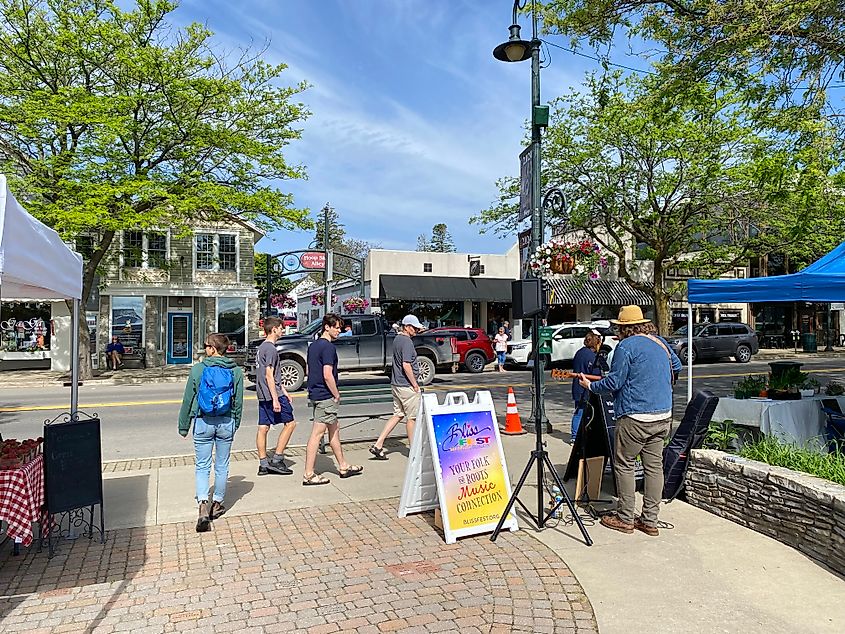
The last of our Lower Peninsula destinations also features distinctly engaging districts. So while we'll keep our sights set on Charlevoix's primary thoroughfare, Bridge Street, the beach (with compulsory red lighthouse, of course), and enigmatic "Mushroom Houses" of the Earl Young Local Historic District, are certainly worth a gander. Bridge Street threads the needle between Lake Michigan (to the west) and Round Lake (an extension of Lake Charlevoix, to the east), crossing the Round Lake Channel in the process. This is where the lively Farmers Market congregates every Thursday (late-May through mid-October) and also where you can watch boaters come and go from the Charlevoix Marina.
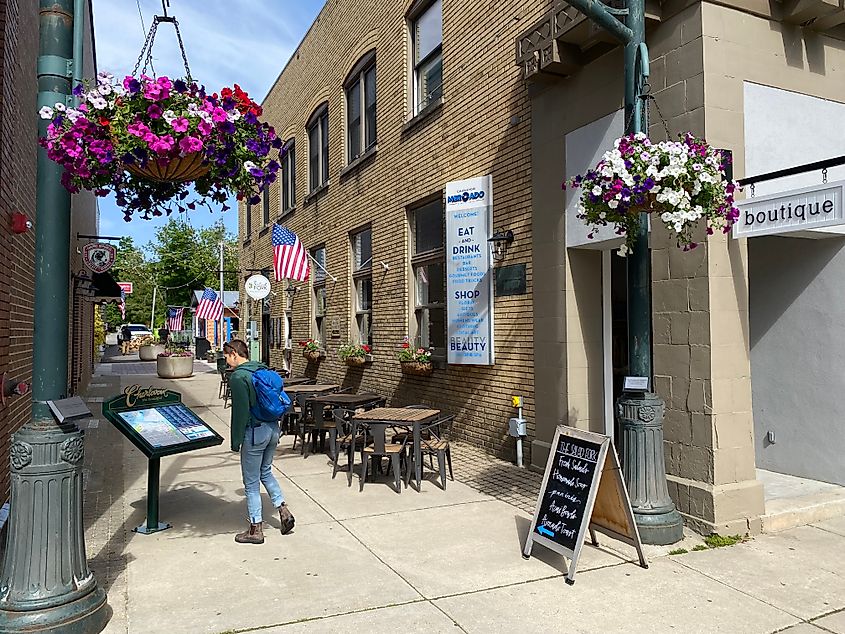
In between, Bridge Street boasts an exceptionally dense commercial sector. Unlike some of the themed towns on this list, these storefronts take on all different aesthetics - from red-brick, to white-picket fence, to contemporary. And similar to Traverse City, Charlevoix's main street is punctuated by refurbished alleys (e.g., Van Pelt Alley), so be sure to explore the additional shops, eateries, and seating areas hiding in plain sight.
Mackinac Island
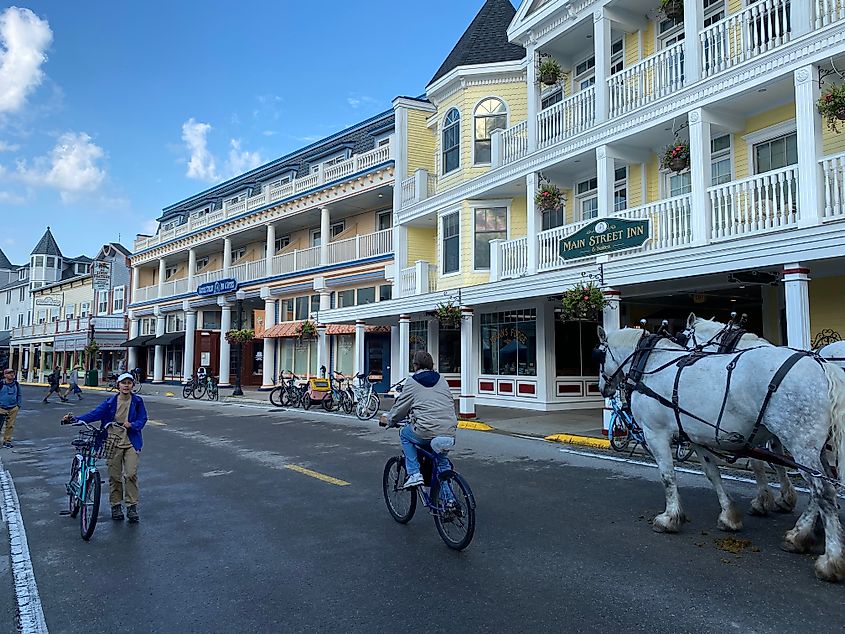
Floating amongst the Straits of Mackinac, Mackinac Island blurs the lines between the Upper and Lower Peninsulas, two Great Lakes, and three centuries. The aptly-named Lake Shore Drive not only acts as this Victorian village's main street, but continues around the entire island as an 8.2-mile cycling path (see the rental agencies in the heart of town). Speaking of which, there are no cars allowed on Mackinac Island (save for the odd maintenance vehicle), so Lake Shore Drive can be walked, cycled, or even traversed via horse-drawn carriage at one's leisure. Beginning at the ferry docks towards Mackinac Island's southern tip, you'll pass rows of esteemed accommodations, eclectic eateries (I recommend Great Turtle Brewery & Distillery), various gift shops, and of course, world-famous fudge shops as you trend north.
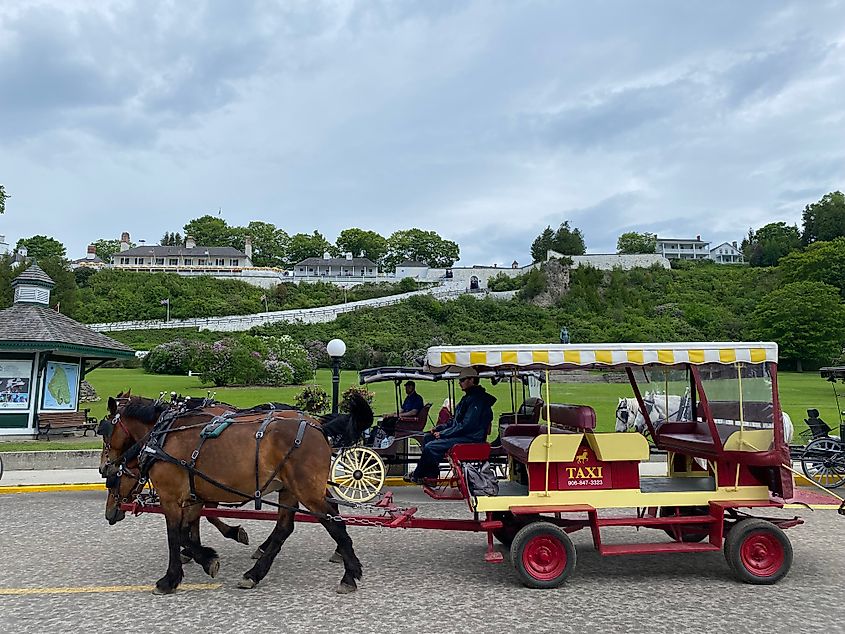
The Mackinac Island State Park Visitors Center marks the opposite terminus of the main street portion of Lake Shore Drive. Over 80% of the island constitutes the namesake national park, so this is a great place to plan/learn about the nature-based portion of your island adventure. With that said, looking out from the visitors center, across beautiful Marquette Park and towards the looming hilltop, Fort Mackinac becomes the obvious next destination on this timeless itinerary.
St. Ignace
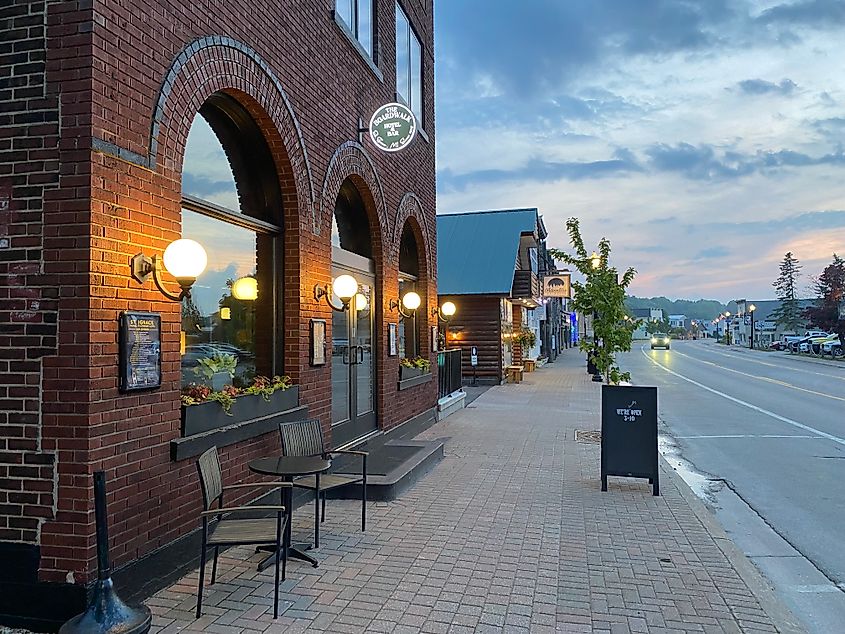
On your way to or from Mackinac Island, be sure to stroll the waterfront drag (i.e., State Street) of St. Ignace - gateway to the Upper Peninsula and thriving ferry port. Along with the multiple substantial docks of East Moran Bay, St. Ignace harbors a well-spaced variety of natural and commercial assets. Trending once again from south to north, it only makes sense to start at Straits State Park, which sprawls before the northern terminus of the iconic, peninsula-spanning Mackinac Bridge. Rounding the bend to Main Street proper, American Legion Park provides another appreciated green space with a nice-sized beach that looks across to the Wawatam Lighthouse. At the base of the lighthouse's pier, Mackinac Grille & Patio Bar and Mackinac Double Decker Ice Cream ensure a casual waterfront meal and ideal summertime dessert, the latter of which can be enjoyed while walking further up the strip.
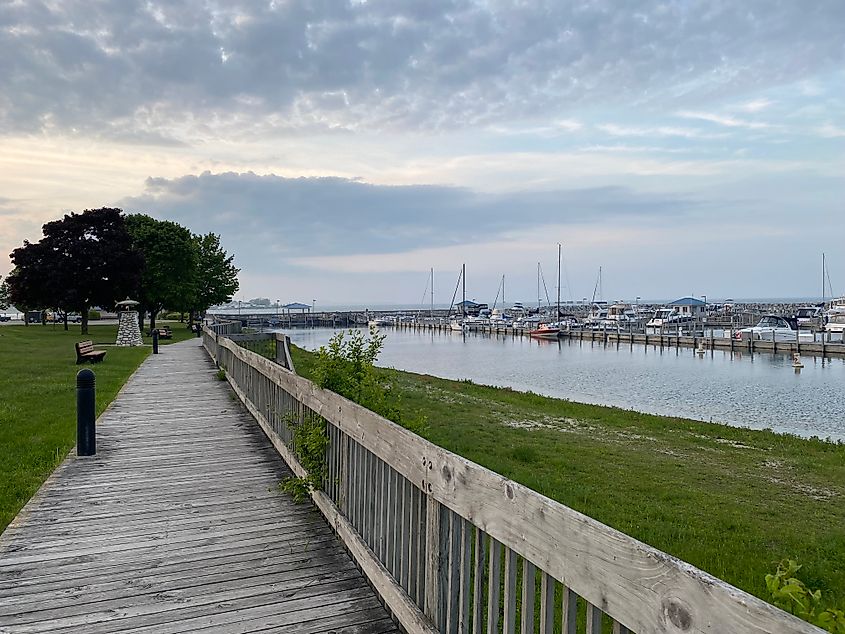
As you approach the St. Ignace Marina, you'll spot an interpretive sign indicating that you are actually taking part in a sliver of the 4,600-mile North Country National Scenic Trail - the longest footpath in the National Trails System. Perhaps this will inspire a future ambition, or perhaps it will simply mark a quirky novelty as you continue on towards the Museum of Ojibwa Culture (i.e., one of the UP's Indigenous nations), and the corresponding Kiwanis Beach.
Marquette
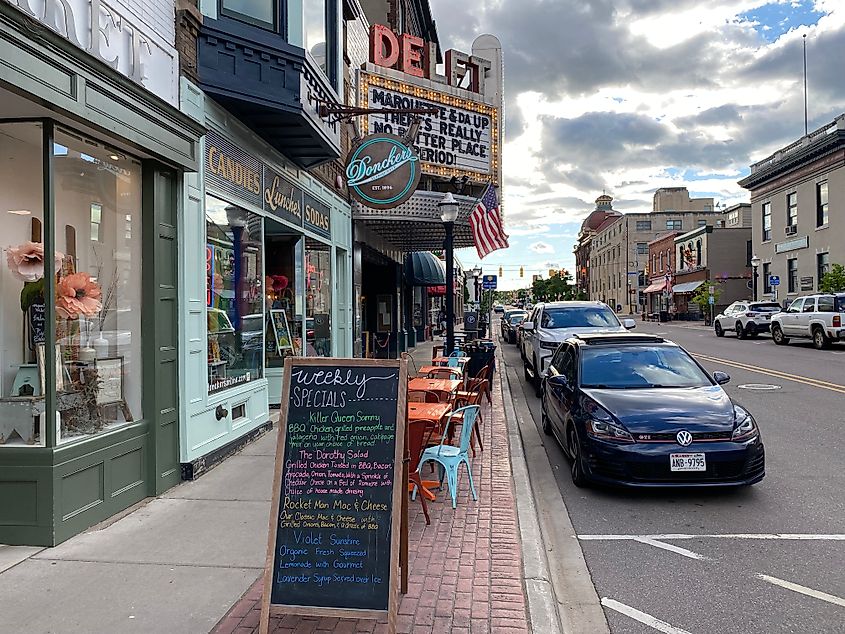
Meandering deep into the Upper Peninsula, now onto the southern shore of Lake Superior, we reach the surprisingly spritely college town of Marquette. While there is an explicitly stated "Main Street," in reality, Washington Street steals the spotlight. It has history (from the Old Marquette City Hall at one end down to the circa-1891 clocktower bank at the other), good eats (such as the Delft Bistro inside the repurposed matinee theatre), nightlife (head across the street to the Honorable Distillery), and neighboring home goods stores to help pass the time in between. Washington Street kicks things up a notch with some fair-weather annual events, so aim for Restaurant Week (March), Art Week (June), and the Fresh Coast Film Festival (October) if you want to get in on the action. Finally, if the water calls to you, then walk Washington all the way east, where you will be greeted by the Marquette Yacht Club and the scenic walkway that parallels the harbor (just look for the Fire Bell monument).
Houghton
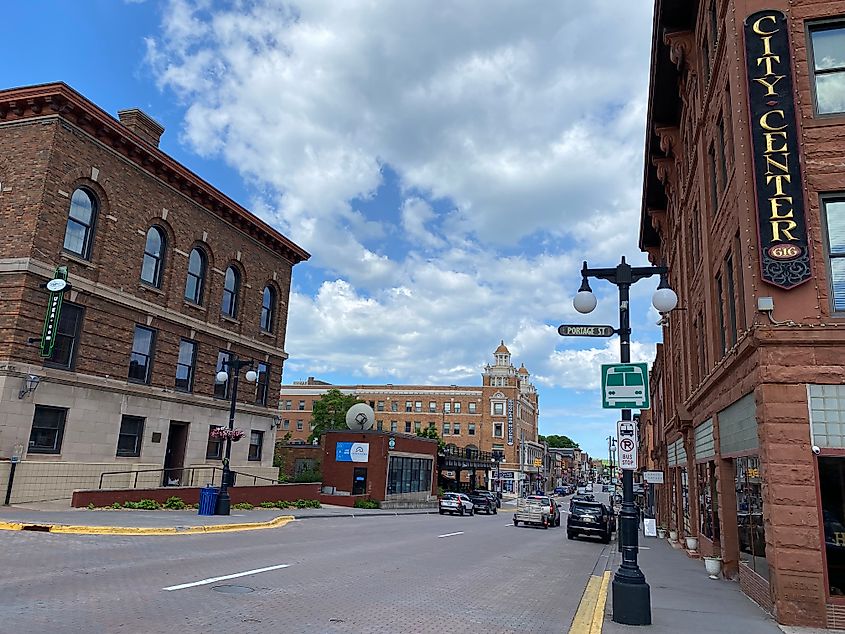
Houghton, aka the "Birthplace of Professional Hockey," is also known as the "Gateway to the Keweenaw Peninsula," thanks to its position at the core of Michigan's northernmost mainland mass. Houghton is a perfect basecamp from which to explore the 23 mining-related heritage sites of Keweenaw Peninsula National Historical Park, and it is one of two ferry ports for Isle Royale National Park (see the namesake visitor center on the Portage Canal for more details). This hub also has a robust main street (i.e., Shelden Avenue) that makes you forget how remote a location you're actually in. By this point in the U.P., you might expect consignment gear shops and scrappy pubs, but in reality, you have specialty spots like Queen City Running, Fresh Coast Yoga, and the Keweenaw Brewing Company. Walk through to the end of Shelden, which is actually a reduced-speed section of Highway 41 (more on this a couple of destinations on), or peek your head down to Lakeshore Drive, and you'll be confronted by Portage Lift Bridge - the world's heaviest and widest double-decked vertical-lift bridge, and National Historic Civil Engineering Landmark.
Calumet
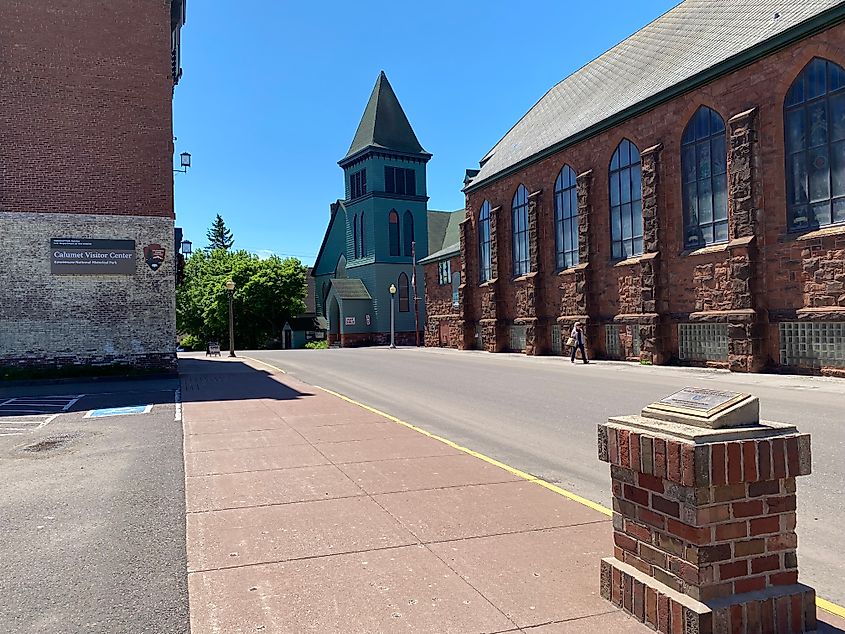
For this next one, I'm going to cheat again by highlighting both 5th and 6th Street, because they really do work in tandem, and they share the exact same aesthetic. Calumet, aka "Coppertown, USA," was the epicenter of the Keweenaw Peninsula's mid-19th-century mineral boom, and is now home to the Keweenaw National Historical Park Visitor Center. Visit the multi-level, mixed-media exhibits within Calumet's old Union Building, and then (map in hand) set out on your dual main street zig-zag. Right away, the teal spire of the Calumet Art Center will catch your eye (it's directly across the street), and then all you sweet-tooths and souvenir hunters will want to hop up another block to Copper World. Continue to admire the collection of rust-colored brick buildings until Oak Street. Then, bop on over to 6th and continue northward so that you can find another treasure or two at Kitschy Spirit Records, enjoy the quintessential miner's saloon that is Shute's, take a peek at some old fire engines within the Copper County Firefighters History Museum, and then maybe catch a play or concert at The Calumet Theatre (circa-1900).
Copper Harbor
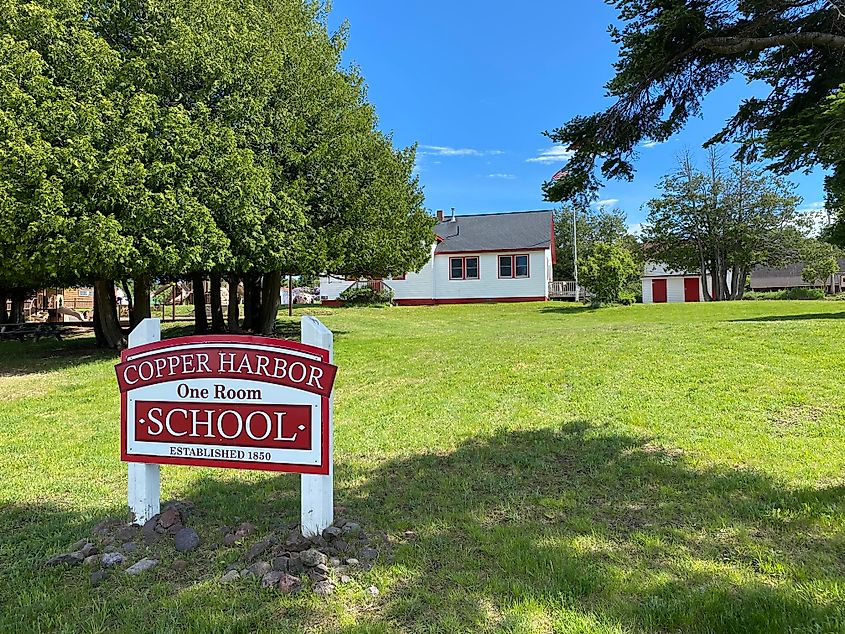
Arriving (as promised) at the northernmost inhabited point of Michigan's Upper Peninsula, Copper Harbor hosts an unconventional main street (i.e., Gratiot Street). Descending Brockway Mountain, you'll begin to get a sense of this isolated timber/mining town's quirks. You've got mini-golf, beautiful inns, gift shops and general stores, an operational one-room schoolhouse (circa 1850), and the Copper Harbor Visitors Center, where you'll find a map showing the 40+ miles of biking and hiking trails. From the visitors center, you may wish to turn south onto Manganese Road, whereupon you'll find trailheads and waterfalls en route into Estivant Pines Wilderness Nature Sanctuary (one of Michigan's last stands of old-growth giant white pines). Or, if you proceed through the east end of town, Fort Wilkins Historic State Park (circa 1844) will emerge on your right. And just a bit further on, an interpretive monument marking the beginning of U.S. Highway 41 - a nearly 2,000-mile journey all the way to Miami, Florida, beginning with Copper Harbor's main street.
From the L.P. to U.P. and the islands and hidden peninsulas in between, Michigan is full of captivating small towns with standout main streets. These twelve destinations, in particular, cover the full gamut of popular beach towns, reinvented mining communities, and villages nestled within The Great Lake State's forgotten nooks.
